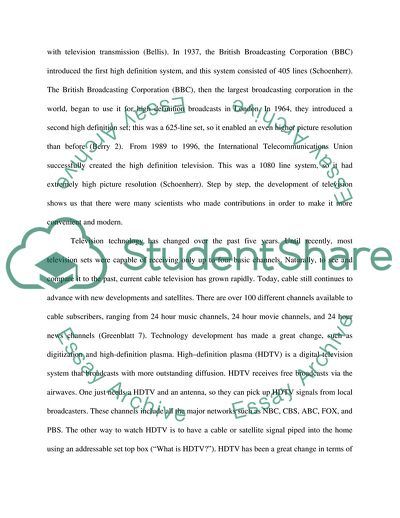Cite this document
(Future Progress in Television Essay Example | Topics and Well Written Essays - 1500 words, n.d.)
Future Progress in Television Essay Example | Topics and Well Written Essays - 1500 words. https://studentshare.org/media/1741795-the-future-of-television
Future Progress in Television Essay Example | Topics and Well Written Essays - 1500 words. https://studentshare.org/media/1741795-the-future-of-television
(Future Progress in Television Essay Example | Topics and Well Written Essays - 1500 Words)
Future Progress in Television Essay Example | Topics and Well Written Essays - 1500 Words. https://studentshare.org/media/1741795-the-future-of-television.
Future Progress in Television Essay Example | Topics and Well Written Essays - 1500 Words. https://studentshare.org/media/1741795-the-future-of-television.
“Future Progress in Television Essay Example | Topics and Well Written Essays - 1500 Words”. https://studentshare.org/media/1741795-the-future-of-television.


